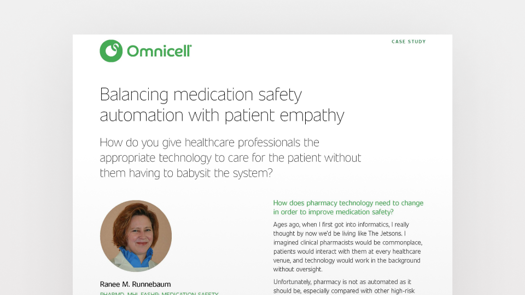
Case Study
Balancing Medication Safety Automation with Patient Empathy
37 results sorted by most recent

Case Study
Balancing Medication Safety Automation with Patient Empathy

Case Study
Enhancing Controlled Drug Management

Case Study
Improving Nursing Efficiency and Patient Care

Case Study
Integrating ePMA with Omnicell Automated Dispensing Cabinets

Case Study
Making Sure You Have the Right Medication at One of the First Points of Care

Case Study
Freeing Up Staff Time with Streamlined One-Stop-Dispensing

Case Study
Significant Reductions in Inventory, Administration, and Waste

Case Study
Automation Cuts Medication Errors, Reduces Harm, and Frees Time

Case Study
Omnicell's VBM 200F Automates Compliance Pack Filling, Enhancing Efficiency and Patient Safety